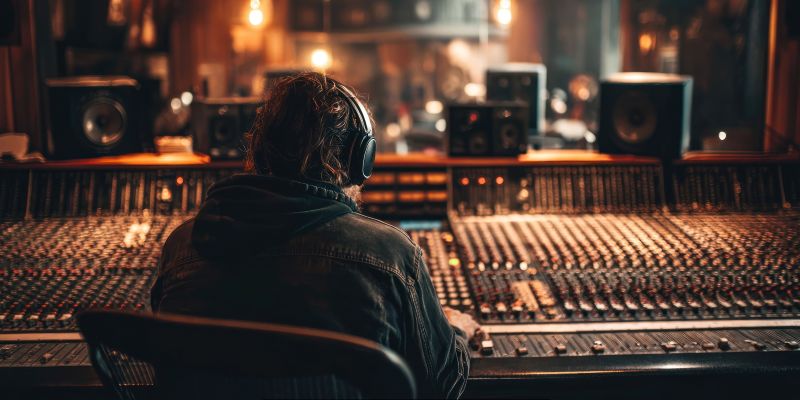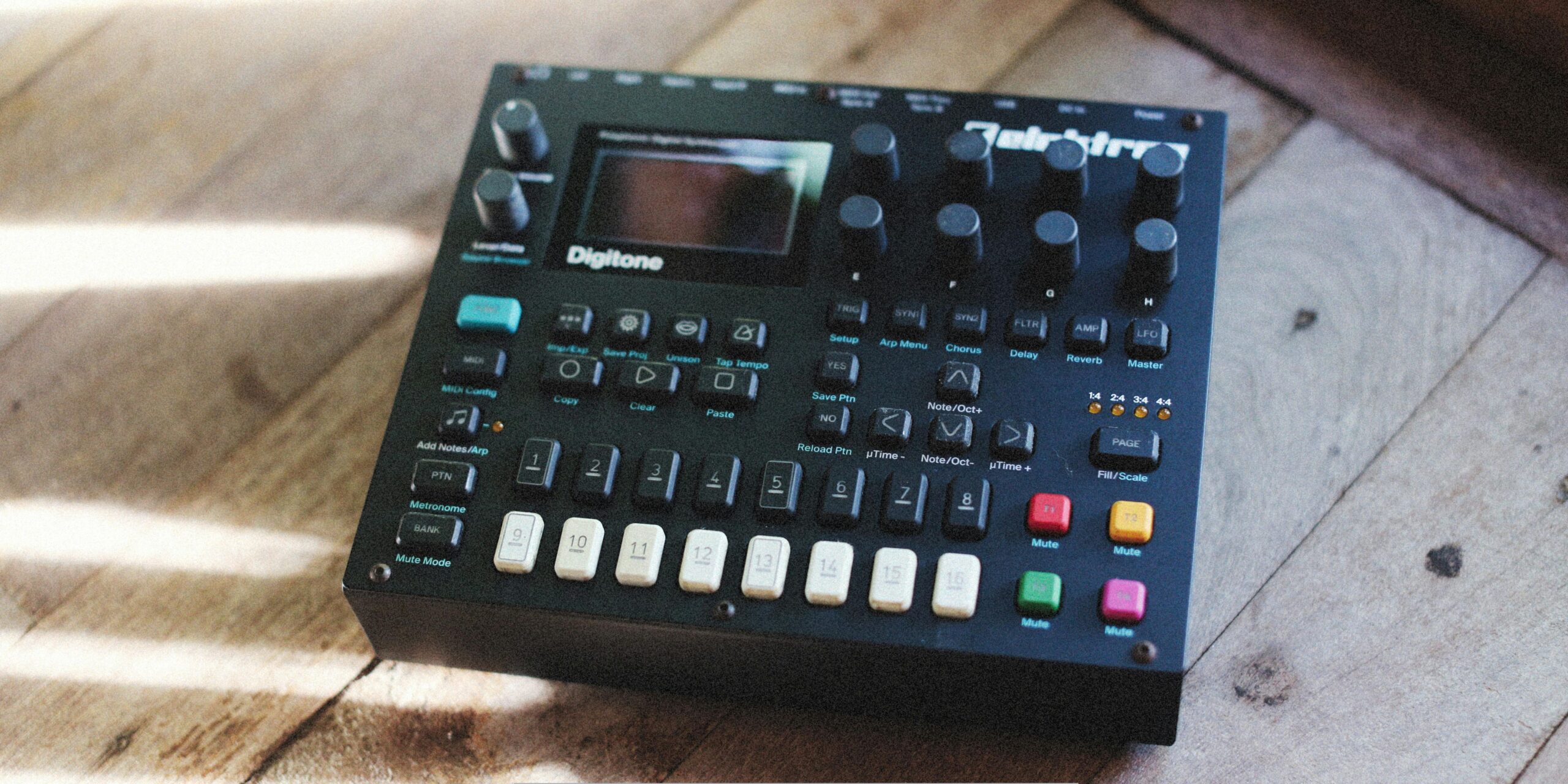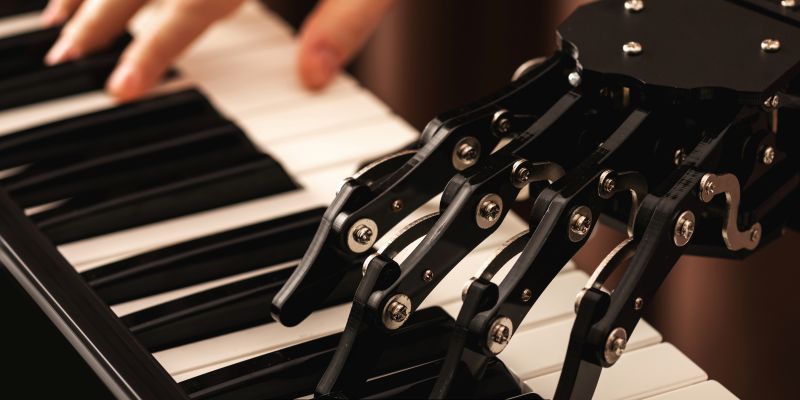Controllerism is a contemporary approach to music performance that emphasizes the use of digital controllers to manipulate sound in real-time. Unlike traditional musicians who may rely on acoustic instruments, controllerists utilize a variety of hardware and software tools to create, modify, and perform music. This innovative practice allows for a high degree of flexibility and creativity, enabling artists to explore new sonic landscapes and engage with their audience in unique ways.
At its core, controllerism is about the interaction between the performer and technology, where the controller becomes an extension of the musician’s intent and expression. The mechanics of controllerism involve a range of devices, from MIDI controllers to software applications that facilitate sound manipulation. These tools can be used to trigger samples, control synthesizers, and apply effects, all while allowing for improvisation and spontaneity.
The beauty of controllerism lies in its adaptability; performers can customize their setups to suit their individual styles and preferences. As technology continues to evolve, so too does the landscape of controllerism, making it an exciting field for both seasoned musicians and newcomers alike.
Key Takeaways
- Controllerism is a performance technique that involves using controllers and software to manipulate and create music in real time.
- When choosing equipment for controllerism, consider factors such as the type of controller, software compatibility, and your specific performance needs.
- Developing your skills in controllerism requires dedicated practice techniques, including mastering finger drumming, pad performance, and live looping.
- Controllerism can be adapted to various music genres, from electronic and hip-hop to jazz and rock, by customizing your setup and performance style.
- Incorporating live performance elements such as finger drumming, live looping, and real-time effects manipulation can enhance the audience’s engagement with controllerism.
Choosing the Right Equipment: A Guide to Controllers and Software
Considering Key Factors
When choosing a controller, several factors need to be taken into account, including portability, functionality, and compatibility with existing software. For example, a compact MIDI keyboard may be perfect for those who prioritize mobility, while a more extensive setup with pads and faders might be better suited for intricate live performances.
The Role of Software
In addition to hardware, the choice of software plays a significant role in shaping a controllerist’s sound. Digital Audio Workstations (DAWs) like Ableton Live or FL Studio provide powerful environments for music creation and performance. These platforms often come equipped with built-in instruments and effects, allowing users to experiment with sound design and composition.
Creating a Personalized Setup
By carefully selecting both hardware and software, controllerists can create a personalized setup that aligns with their artistic vision. With the right equipment and software, artists can unlock their full creative potential and produce unique sounds that set them apart from the rest.
Developing Your Skills: Practice Techniques for Controllerism
Mastering controllerism requires dedication and practice, much like any other musical discipline. One effective technique for developing skills is to set aside regular practice sessions focused on specific aspects of performance. For example, a controllerist might dedicate time to learning how to effectively use effects or experiment with different sampling techniques.
By breaking down the learning process into manageable segments, individuals can build their confidence and proficiency over time. Another valuable practice technique involves recording performances and analyzing them critically. This self-assessment allows controllerists to identify areas for improvement and refine their approach.
Additionally, engaging with online communities or local workshops can provide opportunities for feedback and collaboration. By sharing experiences with fellow musicians, one can gain insights into different techniques and approaches that may enhance their own practice.
Exploring Different Genres: Adapting Controllerism to Various Styles of Music
| Genre | Adaptation | Challenges |
|---|---|---|
| Electronic | Utilize synthesizers and drum machines | Creating unique soundscapes |
| Hip Hop | Sample-based production and scratching | Rhythmic precision and timing |
| Rock | Integrating live instruments with digital effects | Syncing with live band dynamics |
| Pop | Emphasizing catchy melodies and hooks | Balancing accessibility with creativity |
One of the most exciting aspects of controllerism is its versatility across different musical genres. From electronic dance music (EDM) to hip-hop, controllerists can adapt their techniques to suit a wide array of styles. For instance, in EDM, performers often focus on creating high-energy sets that incorporate dynamic drops and build-ups.
This may involve layering multiple tracks and utilizing effects to create an immersive experience for the audience. Conversely, in genres like jazz or experimental music, controllerists might prioritize improvisation and spontaneity. By using controllers to manipulate sounds in real-time, they can create unique compositions that reflect their artistic vision.
This adaptability not only broadens the scope of what is possible within controllerism but also encourages musicians to explore new creative avenues that may not have been accessible through traditional means.
Incorporating Live Performance: Tips for Engaging Audiences with Controllerism
Engaging an audience during a live performance is essential for any musician, and controllerists have unique opportunities to captivate listeners through their dynamic setups. One effective strategy is to create a visually stimulating performance by incorporating lighting effects or visual projections that sync with the music. This multi-sensory experience can enhance the overall impact of the performance and draw the audience into the artistic journey.
Additionally, interaction with the audience can significantly elevate a live performance. Controllerists can encourage participation by inviting listeners to suggest samples or sounds during the show. This not only fosters a sense of community but also allows for spontaneous creativity that can lead to memorable moments.
By blending technical skill with audience engagement, controllerists can create performances that resonate deeply with their listeners.
Collaborating with Other Musicians: Using Controllerism in Group Settings
Clear Communication is Key
Establishing clear communication is vital in collaborative music creation. This ensures that each musician understands their role and can contribute effectively to the overall sound. By doing so, musicians can work together seamlessly, resulting in a cohesive and harmonious performance.
Integrating Technology with Traditional Instruments
In group settings, controllerists can utilize their technology to complement traditional instruments or vocal performances. For instance, a controllerist might use their setup to provide rhythmic elements or atmospheric textures that enhance a live band’s sound. This integration of electronic elements with acoustic instruments enables musicians to create rich sonic tapestries that push the boundaries of genre conventions.
Expanding Creative Possibilities
By leveraging controllerism in collaborative music creation, musicians can explore new creative possibilities. The fusion of electronic and acoustic elements allows artists to experiment with unique sounds, textures, and rhythms, resulting in innovative and captivating performances.
Creating Original Music: Composition and Production Techniques for Controllerism
The process of creating original music through controllerism involves a blend of composition and production techniques that allow artists to express their unique voices. One effective approach is to start with a foundational idea or theme and build upon it using various samples and loops. By layering different sounds and manipulating them in real-time, controllerists can develop intricate compositions that evolve organically during the creative process.
Moreover, utilizing software tools such as MIDI sequencing or audio editing can enhance the production quality of original works. Controllerists can experiment with different arrangements, effects, and sound design techniques to refine their compositions further. This iterative process not only fosters creativity but also encourages artists to explore new sonic possibilities that may arise during experimentation.
Mastering Effects and Manipulation: Utilizing Controllers for Dynamic Sound Design
A key component of controllerism is the ability to manipulate sound through various effects in real-time. Mastering these effects requires an understanding of how they interact with different audio signals and how they can be applied creatively during performances or productions. For instance, reverb can add depth to a sound, while delay can create rhythmic patterns that enhance musical phrases.
Controllerists often experiment with different combinations of effects to achieve unique sonic textures. By mapping effects parameters to physical controls on their devices, they can create dynamic changes in sound that respond to their performance style. This level of control allows for expressive playing that captivates audiences and elevates the overall musical experience.
Building a Controllerism Setup: Customizing and Optimizing Your Performance Rig
Creating an effective controllerism setup involves careful consideration of both hardware and software components tailored to an individual’s needs. A well-optimized rig should prioritize ease of use while providing sufficient flexibility for creative expression. This may involve selecting controllers that offer intuitive layouts or integrating software that complements one’s workflow.
Additionally, cable management and organization play crucial roles in ensuring a smooth performance experience. By keeping cables tidy and accessible, controllerists can minimize technical issues during live shows or studio sessions. Customizing one’s setup not only enhances functionality but also fosters a sense of ownership over the creative process.
Overcoming Challenges: Troubleshooting and Problem-solving in Controllerism
Like any musical endeavor, controllerism comes with its own set of challenges that require problem-solving skills and adaptability. Technical issues such as latency or software crashes can disrupt performances if not addressed promptly. To mitigate these challenges, controllerists should familiarize themselves with their equipment and software settings before going live.
Moreover, developing a troubleshooting mindset is essential for overcoming obstacles during performances or practice sessions. This may involve having backup plans in place or being prepared to improvise when faced with unexpected situations. By cultivating resilience and resourcefulness, controllerists can navigate challenges effectively while maintaining their artistic integrity.
Pushing Boundaries: Innovations and Experimental Approaches in Controllerism
As technology continues to advance, so too does the potential for innovation within controllerism. Many artists are exploring experimental approaches that challenge traditional notions of music creation and performance. This may include integrating unconventional instruments or utilizing generative algorithms that produce music based on specific parameters.
Furthermore, collaborations between visual artists and musicians are becoming increasingly common within the realm of controllerism. By merging sound with visual art forms such as projection mapping or interactive installations, artists can create immersive experiences that transcend conventional performance boundaries. This spirit of experimentation not only enriches the artistic landscape but also inspires future generations of musicians to push the limits of what is possible within controllerism.
In conclusion, controllerism represents a dynamic intersection between technology and musical expression that continues to evolve as artists explore new possibilities within this innovative practice. Through careful equipment selection, skill development, collaboration, and experimentation, musicians can harness the power of controllerism to create captivating performances that resonate deeply with audiences around the world.
FAQs
What is Controllerism?
Controllerism is a style of music performance that involves the use of electronic controllers, such as MIDI controllers and software, to manipulate and create music in real time.
What equipment is used in Controllerism?
Controllerism typically involves the use of MIDI controllers, such as pad controllers, keyboards, and DJ controllers, as well as software such as Ableton Live, Traktor, and Serato.
How is Controllerism different from traditional DJing or music production?
Controllerism differs from traditional DJing and music production in that it focuses on real-time manipulation and performance of music using electronic controllers, rather than simply playing pre-recorded tracks or creating music in a studio setting.
Who are some notable Controllerism artists?
Notable Controllerism artists include Moldover, Ean Golden, and DJ Shiftee, who have gained recognition for their innovative use of controllers in their music performances.
What are the benefits of Controllerism?
Controllerism allows for a high level of creativity and improvisation in music performance, as well as the ability to manipulate and shape sound in real time, creating a unique and dynamic musical experience for both the performer and the audience.





